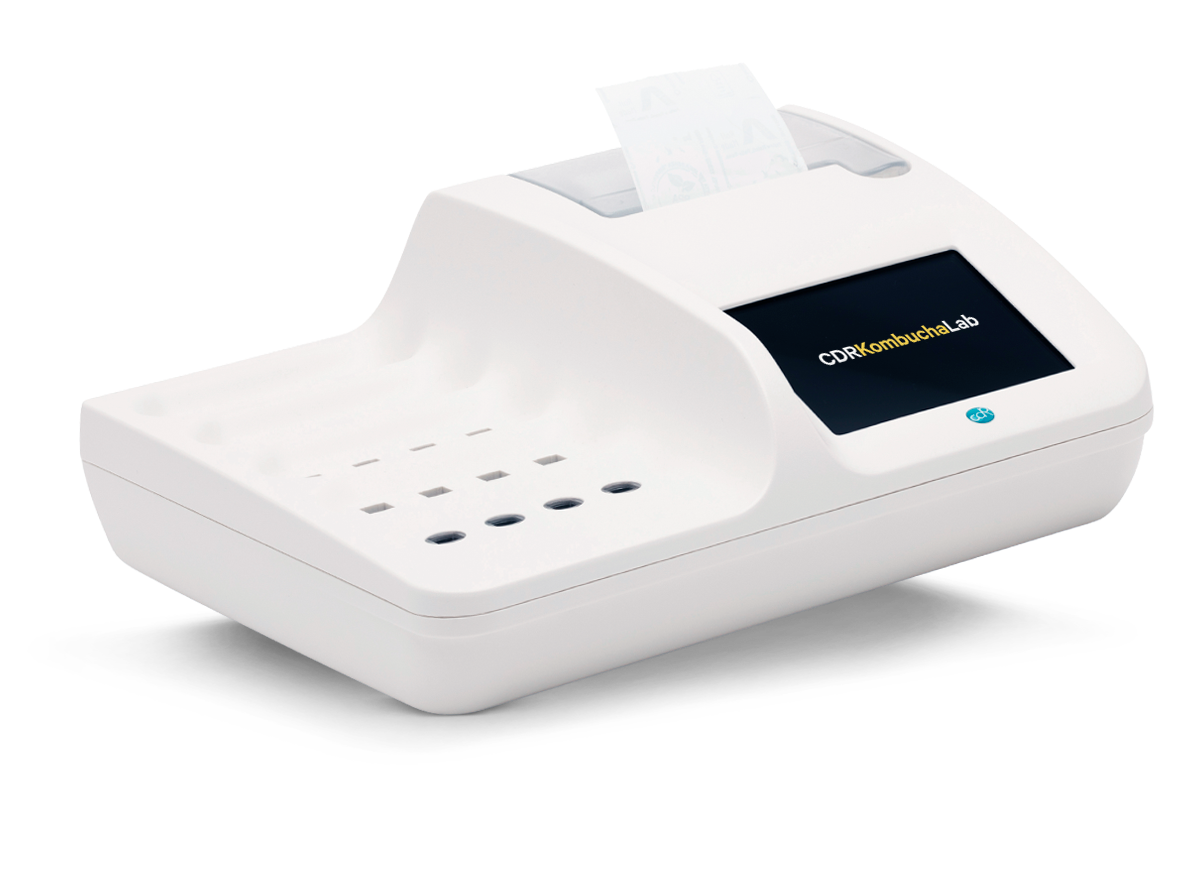Determination of Fermentable Sugars in Kombucha
Kombucha is a fermented beverage obtained from tea and added sugars (mainly sucrose). It is advisable to check the evolution of the fermentation process, promoted by the symbiosis of bacteria and yeasts used to produce it, in order to be able to stop it once the optimal sugar level has been reached. This allows to obtain the desired taste and organoleptic characteristics. Furthermore, the analysis of sugars allows the prompt recognition of a possible fermentation stop.
Method
Test type: End Point.
Time testing: 11 minutes.
Analysis sessions with multiple samples are possible for up to a maximum of 16 tests for CDR KombuchaLab and 3 tests for CDR KombuchaLab Junior.
...
Sample treatment
For precise and repeatable analysis, degas the sample using the ultrasonic bath (code 222062) and clarify it, if necessary, using the centrifuge (code 222061). Dilute the sample with the included dilution kit, as required by the method.
Principle of the test
Fermentable sugars (glucose, fructose and sucrose) in the presence of NAD+ react with glucose oxidase, developing NADH. The concentration expressed in g/L is determined through the stoichiometric ratio 1:1 with the total quantity of sample sugars.
Calibration curve
The calibration curve of the CDR KombuchaLab, obtained by comparing the CDR method with the enzymatic method for the determination of glucose, fructose and sucrose, confirmed an excellent linearity of the system over the entire measurement range.
...
Reagent test Kits
Measuring range
| Analyses | Measuring range | Resolution | Repeatability |
|---|---|---|---|
| Sugars (glu,fru,suc)[4-100 g/L] | 4 - 100 g/L | 0.1 g/L | 0.7 g/L |
The Analyzers for process and quality control in kombucha brewing
CDR KombuchaLab
Complete analysis panel, supplied already configured
Up to 16 determinations simultaneously
Possibility of carrying out analyses of the same sample
Integrated printer
Full connections (LAN - USB - Bluetooth barcode/QR code reader)
CDR KombuchaLab Jr
Partial analysis panel, customisable configuration
Up to 3 determinations simultaneously
Wireless connection to external printer
USB connections
